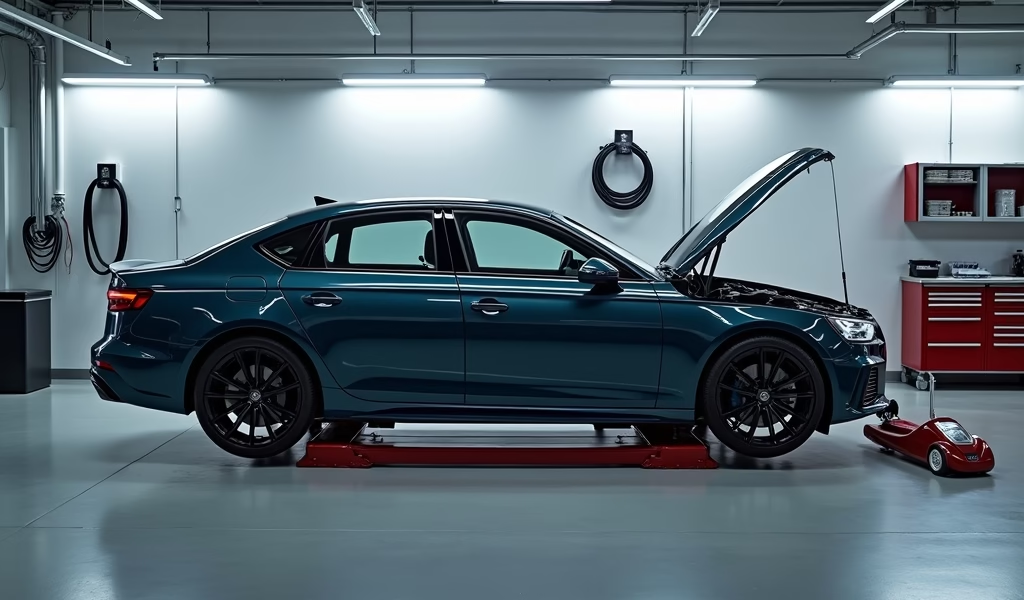Overview
This article details five essential maintenance strategies for maximizing the value of zero-percent financed vehicles, emphasizing following manufacturer service schedules, proper tire care, fluid maintenance, battery monitoring, and interior/exterior protection. The author, a master technician with 20+ years of experience, argues that these practices can help vehicles exceed 200,000 miles while preserving resale value, making them crucial complementary habits to the initial smart financial decision of securing interest-free financing.
Table of Contents
- Understanding 0 Percent Car Deals: A Smart Start
- Follow Your Manufacturer’s Service Schedule Religiously
- Tire Care: Your Connection to the Road
- Fluid Maintenance: The Lifeblood of Your Vehicle
- Battery and Electrical System Care
- Interior and Exterior Protection: Preserving Value
- Conclusion: Maximizing Your Investment
- Frequently Asked Questions
Understanding 0 Percent Car Deals: A Smart Start
Scoring a 0 percent car deal is like finding a four-leaf clover in the automotive world. These interest-free financing options can save you thousands over the life of your loan. But getting the keys is just the beginning – proper maintenance is what truly maximizes this investment.
As a master technician with over 20 years under the hood, I’ve seen firsthand how regular maintenance dramatically extends vehicle life. Cars with consistent care routinely surpass 200,000 miles, while neglected vehicles often develop serious issues before hitting six figures.
Think of maintenance as the partner to your smart financial decision. You’ve avoided interest payments – now protect that investment with these five essential maintenance strategies that will keep your vehicle running smoothly for years to come.
Follow Your Manufacturer’s Service Schedule Religiously

Your vehicle’s manufacturer invested millions in engineering and testing to develop the perfect maintenance schedule. This isn’t a suggestion – it’s your roadmap to longevity.
Oil changes remain the cornerstone of proper maintenance. Fresh oil lubricates engine components, reduces friction, and prevents premature wear. Skipping oil changes is like running a marathon without water – eventually, something’s going to break.
Beyond oil, your service schedule includes critical inspections and replacements that prevent cascading failures. These include:
- Timing belt replacement (typically every 60,000-100,000 miles)
- Air filter changes (usually every 15,000-30,000 miles)
- Spark plug replacement (generally every 30,000-100,000 miles depending on type)
- Brake inspections (recommended with every oil change)
Documented service history serves another crucial purpose: protecting your warranty and enhancing resale value. According to Kelley Blue Book, complete maintenance records can add hundreds or even thousands to your vehicle’s value when it’s time to sell.
Pro tip: Create a digital or physical folder for all service receipts. This small habit can pay dividends when proving warranty coverage or selling your vehicle.
Tire Care: Your Connection to the Road
Your tires are literally where the rubber meets the road – the only four points of contact between your vehicle and the asphalt. Their condition affects everything from safety to fuel economy.
Maintaining proper tire pressure tops the list for simple yet effective maintenance. Underinflated tires create excess rolling resistance, forcing your engine to work harder and burn more fuel. The U.S. Department of Energy reports that correct tire pressure can improve fuel efficiency by up to 3% – savings that add up over thousands of miles.
To maximize tire life and performance:
- Check pressure monthly and before long trips (always when tires are cold)
- Rotate tires every 5,000-8,000 miles for even wear patterns
- Inspect tread depth regularly using the penny test (if Lincoln’s head is visible, it’s time for new tires)
- Align your wheels annually or when you notice pulling to one side
In my shop, we regularly see tires lasting 20,000+ miles beyond their expected lifespan with proper rotation and inflation habits. That’s hundreds of dollars in savings that complement your 0 car finance deal perfectly.
Fluid Maintenance: The Lifeblood of Your Vehicle
While oil gets most of the attention, your vehicle relies on several critical fluids to function properly. Each serves a specific purpose and requires periodic inspection and replacement.
Coolant/antifreeze prevents overheating and freezing while providing corrosion protection. Most manufacturers recommend replacement every 2-5 years, as degraded coolant loses its protective properties and can damage internal engine components.
Transmission fluid ensures smooth gear operation. Low or burnt transmission fluid often manifests as rough shifting or unusual noises. Most vehicles require service every 30,000-60,000 miles, though some newer transmissions claim “lifetime” fluid (which I’ve found typically means 100,000 miles in real-world conditions).
Brake fluid is hygroscopic – it absorbs moisture from the air over time. This reduces its effectiveness and can damage brake components. Have it inspected during regular maintenance and replaced according to your manual (typically every 2-3 years).
Power steering fluid enables easy steering. Low levels cause steering difficulty and strange noises when turning. Check it monthly along with your other fluids.
If you spot fluid leaks (colored spots under your vehicle), address them immediately. Even small leaks can quickly lead to catastrophic damage if components run dry. Remember: fluids are always cheaper than the parts they protect.
Battery and Electrical System Care
Modern vehicles are essentially computers on wheels, making electrical system health more crucial than ever. The battery serves as the foundation, typically lasting 3-5 years depending on climate and driving habits.
Watch for these warning signs of battery deterioration:
- Engine cranking slowly during startup
- Dimming headlights, especially with multiple accessories running
- Dashboard warning lights appearing intermittently
- Needing jump starts, even occasionally
Simple battery maintenance can significantly extend its life:
- Keep terminals clean and corrosion-free (a mixture of baking soda and water works wonders)
- Ensure connections are tight and secure
- Limit accessory use when the engine is off
- Consider a trickle charger for vehicles that sit unused for extended periods
Beyond the battery, pay attention to other electrical components. Flickering lights, inoperative accessories, or unusual electrical behavior should be investigated promptly. In my experience, addressing minor electrical issues early prevents them from cascading into major (and costly) problems later.
For those in extreme climates, battery life can vary dramatically. In Arizona’s heat, I’ve seen batteries fail after just two years, while the same model might last five in milder climates. Adjust your maintenance expectations accordingly.
Interior and Exterior Protection: Preserving Value

Protecting your vehicle’s appearance isn’t just about pride – it directly impacts resale value. Environmental elements constantly attack your car’s finishes, but regular care minimizes their impact.
For exterior protection:
- Wash your vehicle every 2-3 weeks to remove contaminants
- Apply quality wax quarterly to provide UV and pollutant protection
- Address chips and scratches promptly to prevent rust formation
- Park in garages or shaded areas when possible to minimize sun damage
Interior care is equally important:
- Use appropriate cleaners for different surfaces (leather, fabric, plastic)
- Install quality floor mats to protect carpeting
- Apply UV protectant to prevent dashboard cracking
- Clean spills immediately to prevent staining
In my years of appraising trade-ins, I’ve consistently seen a $1,500-2,500 value difference between well-maintained and neglected vehicles with identical mechanical conditions. That’s a significant return on the minimal investment required for regular cleaning and protection.
Seasonal considerations also matter. In winter, frequent washing removes corrosive road salt, while summer calls for additional UV protection. Living in the Midwest, I’ve seen countless undercarriages ruined by salt, while desert vehicles often suffer severe interior damage from sun exposure.
Taking advantage of 0 APR car deals means you’ve already made a smart financial choice – protecting that investment with proper care just makes good sense.
Conclusion: Maximizing Your Investment
When you secure a zero-percent financing deal, you’ve already demonstrated financial savvy. Complementing this with diligent maintenance creates a powerful combination that maximizes your automotive investment.
Regular maintenance isn’t just about avoiding problems – it’s about optimizing performance, efficiency, and longevity. A well-maintained vehicle is more pleasant to drive, more reliable in critical situations, and ultimately more valuable when it’s time to sell or trade.
Think of your maintenance schedule as an insurance policy against major expenses. The relatively modest cost of routine maintenance pales in comparison to the expense of major repairs that could have been prevented.
As someone who’s spent decades under the hood, I can assure you that the vehicles I see hitting 200,000+ miles aren’t there by accident – they’re there because their owners invested in consistent care. Your zero-percent financing was the smart beginning – now proper maintenance is the path to long-term automotive satisfaction.
Remember: in the automotive world, an ounce of prevention truly is worth a pound of cure. Your wallet will thank you in the long run.
Frequently Asked Questions
What exactly is a 0 percent car deal?
A 0 percent car deal is a financing arrangement where you pay no interest on your auto loan. You only pay back the principal amount borrowed, potentially saving thousands over the life of the loan.
Who typically qualifies for 0 percent financing?
Borrowers with excellent credit scores (typically 700+) and stable income histories are most likely to qualify. These promotions are usually reserved for the most creditworthy customers.
Are there hidden costs in 0 percent financing deals?
Some 0 percent deals may come with higher vehicle prices or require forfeiting cash rebates that could be more valuable. Always calculate the total cost under different financing scenarios before deciding.
How often are 0 percent deals available?
Zero percent financing is typically offered during model year transitions, holiday promotions, or when dealerships need to move specific inventory. They tend to be cyclical and more common during economic downturns.
Will I void my warranty if I don’t service at the dealership?
No, independent shops can perform maintenance without voiding your warranty, provided they use appropriate parts and procedures. The Magnuson-Moss Warranty Act protects your right to choose where your vehicle is serviced.

